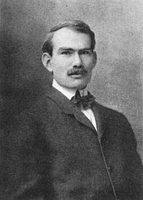










Lee de Forest was an American inventor with over 180 patents to his credit. He named himself the "Father of Radio," and famously said, "I discovered an Invisible Empire of the Air, intangible, yet solid as granite."
In 1906 de Forest invented the Audion, the first triode vacuum tube and the first electrical device which could amplify a weak electrical signal and make it stronger. The Audion, and vacuum tubes developed from it, founded the field of electronics and dominated it for forty years, making radio broadcasting, television, and long-distance telephone service possible, among many other applications. For this reason de Forest has been called one of the fathers of the "electronic age". He is also credited with one of the principal inventions that brought sound to motion pictures.
De Forest was a charter member of the Institute of Radio Engineers. DeVry University was originally named De Forest Training School by its founder Dr. Herman A. De Vry, who was a friend and colleague of de Forest.
In 1920 de Forest began to work on a practical system for recording and reproducing sound motion pictures. He developed a sound-on-film optical recording system called Phonofilm and demonstrated it in theatres between 1923 and 1927. Although it was basically correct in principle, its operating quality was poor, and he found himself unable to interest film producers in its possibilities. Paradoxically, within a few years’ time, the motion-picture industry converted to talking pictures by using a sound-on-film process similar to de Forest’s. During the 1930s de Forest developed Audion-diathermy machines for medical applications, and during World War II he conducted military research for Bell Laboratories.
IEEE Medal of Honor (1922)
Elliott Cresson Medal (1923)